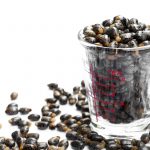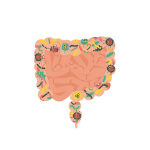In Defense of Essential Oils: Synergy, Nature’s Wisdom, & Misleading Studies
Naturopathic Perspective
Sarah LoBisco, ND, IFMCP
For the love of science, can we stop the chit-chat about lavender, tea tree, and man boobs in little boys?!
The controversy over the “estrogenic properties” of certain essential oils resurfaced recently, sending essential oil lovers and the media into a familiar state of confusion.1-5 The uproar stemmed from findings presented at the Endocrine Society’s 100th annual meeting and released in March 2018.4 In the study, the researchers assessed the hormonal effects of 8 constituents commonly found in lavender and tea tree essential oils on human cancer cells. Because the in-vivo results indicated changes in the cellular gene activities of estrogen and androgen receptors, they concluded that the synergistic, therapeutic essential oils might behave similarly in vivo. The media then deemed these essential oils to be endocrine disruptors that could cause young boys to develop gynecomastia.4-5
The methods of the experiment were highlighted in Science Daily5:
Under Korach’s direction, Ramsey and his NIEHS colleagues went a step further. From the hundreds of chemicals that comprise lavender and tea tree oil, they selected for analysis eight components that are common and mandated for inclusion in the oils. Four of the tested chemicals appear in both oils: eucalyptol, 4-terpineol, dipentene/limonene and alpha-terpineol. The others were in either oil: linalyl acetate, linalool, alpha-terpinene and gamma-terpinene. Using in vitro, or test tube, experiments, the researchers applied these chemicals to human cancer cells to measure changes of estrogen receptor- and androgen receptor-target genes and transcriptional activity.
All eight chemicals demonstrated varying estrogenic and/or anti-androgenic properties, with some showing high or little to no activity, the investigators reported. Ramsey said these changes were consistent with endogenous, or bodily, hormonal conditions that stimulate gynecomastia in prepubescent boys.
This concern is not new. The New England Journal of Medicine published an article in 2007 that reported on 3 cases of prepubertal gynecomastia associated with lavender and tea tree essential oils.6 The sex-steroid signaling disturbances were “verified” by an in-vitro analysis of human breast cancer (MCF-7) cells that express estrogen receptors as well as human breast cancer (MDA-kb2) cells that express the androgen receptor.6-8
For several reasons, this 2007 study has been criticized for its conclusions. First, the cases in question were not connected to the use of the pure essential oils of lavender and tea tree; rather, all of them were linked to personal care products that contained these oils. These consumer goods are known to have ingredients that are deemed to be endocrine disruptors.6,10,11 This biases the inference of sex-steroid alterations by the essential oils. The dosages used to produce the effects in a petri dish in the experiment were also likely not generalizable to actual human absorption of these oils in a commercial product.7
Another problem was that the essential oils within the products were not validated for therapeutic quality and sourcing. The lavender tested in vitro was likely attained from a synthetic source, according to the supplier listed in the article.6,12,13 This disregards the synergy of pure essential oils – a concept that will be discussed in more detail later as it relates to the most recent study.
In the in-vitro experiment, the oils “were diluted in dimethylsulfoxide [DMSO] before they were added to culture media.”6 This is not in alignment with conserving essential oils’ delicate constituents and their medicinal properties. (Please refer to my essential oils database14 for articles about quality measurements of essential oils, as this is beyond the scope of this current discussion). DMSO also has been reported to alter outcomes in experiments via stimulation or inhibition of steroid signaling, depending on dosage used.15 Furthermore, in a recent webinar with essential oil expert, Robert Tisserand, it was pointed out that the petri dish trays themselves contain plasticizers – known endocrine disruptors – that could be further broken down by the essential oils, released into the medium, and cause endocrine disruption that is mistakenly attributed to the essential oils or their constituents.10,11,16
Misleading Conclusions
The latest scare has just as many complications as in the past, including all the pitfalls of the petri dish extrapolations discussed above. As explained, one of the largest problems with in-vitro experiments is that the effects in a living system cannot be assumed to be the same as those observed in vitro, especially with essential oils.17-20
For example, in a 2008 study entitled “Evaluation of the Developmental Toxicity of Linalool in Rats,” the authors stated, “It is concluded that linalool is not a developmental toxicant in rats at maternal doses of up to 1000 mg/kg/day.”17 This would not be consistent with the estrogenic activities of lavender suggested in the in-vitro experiment presented by the Endocrine Society.
A 2002 study compared estrogenic activity of various essential oil constituents in 2 types of cells (both in-vitro) and in ovariectomized mice (in-vivo). Effects varied widely, based not only on cell types assessed, but also on petri dish vs living creature.18 The abstract states:
This study was undertaken to investigate the potential estrogenic activity of a number of essential oil constituents. Initially, estrogenic activity was determined by a sensitive and specific bioassay using recombinant yeast cells expressing the human estrogen receptor. At high concentrations, estrogenic activity was detected for citral (geranial and neral), geraniol, nerol and trans-anethole, while eugenol showed anti-estrogenic activity. Molecular graphics studies were undertaken to identify the possible mechanisms for the interaction of geranial, neral, geraniol, nerol and eugenol with the ligand-binding domain of the estrogen alpha-receptor, using the computer program HyperChem. Citral, geraniol, nerol and eugenol were also able to displace [(3)H]17beta-estradiol from isolated alpha- and beta-human estrogen receptors, but none of these compounds showed estrogenic or anti-estrogenic activity in the estrogen-responsive human cell line Ishikawa Var I at levels below their cytotoxic concentrations, and none showed activity in a yeast screen for androgenic and anti-androgenic activity. The potential in-vivo estrogenic effects of citral and geraniol were examined in ovariectomized mice, but neither compound showed any ability to stimulate the characteristic estrogenic responses of uterine hypertrophy or acute increase in uterine vascular permeability. These results show that very high concentrations of some commonly used essential oil constituents appear to have the potential to interact with estrogen receptors, although the biological significance of this is uncertain.18
In humans, hormonal disruption by lavender essential oil has not been found. Robert Tisserand states that lavender was not found to be a uterine stimulant and has been used safely in childbirth19:
The research shows that lavender oil (L. angustifolia) is not a uterine stimulant. When used on the isolated rat uterus, it in fact reduced contractions (Lis Balchin and Hart 1999). And, lavender oil has no apparent adverse effects during childbirth. It was one of ten essential oils offered to 8,058 women in an 8-year study at the John Radcliffe Hospital in Oxford, UK. Aromatherapy did, however, reduce the need for pain medication. During the years of the study, the use of pethidine in the study center declined from 6% to 0.2% of women (Burns et al 2000).19
The conclusions most recently reported were also not based on the actions of pure essential oils, but rather on the constituents found within them. Studies that separate 1 compound from a natural source and generalize its effects to the whole plant or substance are rampant and misleading in the supplement and natural health world. I discussed this concept in more detail and with references in an article I wrote for Saratoga.com.21
Ignoring the synergism of essential oils and disregarding the complexity and intricacies of their natural design is similar to isolating and mega-dosing a vitamin or mineral without considering its interacting and complementary components. This approach can cause imbalances or even harm to individuals; it is also short-sighted. As I discussed in an article published on the Natural Path website22:
As you can see, there is complexity to essential oils. Essential oils contain a wide array of constituents, regardless of how they are classified. These all have synergistic or differing therapeutic actions and mechanisms, which can support and balance out one’s biochemistry. Furthermore, one constituent can have multiple actions. For example, alcohols can be antimicrobial, antiseptic, tonifying, balancing, spasmolytic, anesthetic, and anti-inflammatory.5
Their chemical composition can also vary depending on the season of harvest and methods of extraction (distillation, hydrodistillation, super critical carbon dioxide extraction, and solvent extraction- the latter two are not technically essential oils). A final intricacy of an essential oil’s action to consider is its chemotype or distinct plant population within the same species. These various populations produce differing plant secondary metabolites that have differing effects.5,6,8,18
There is also a difference, in terms of effects and processing, between synthetic isolates formed in labs and those found in nature – differences that potentially impact metabolism. I discussed this in a post on my website, in which I provide the example of wintergreen23:
Regarding the oil of wintergreen and toxicity, most toxic reports are based on its constituent, methyl salicylate. I have a chemist friend who explained to me the difference between synthetic methyl salicylate and that found in wintergreen oil. He said methyl salicylate manufactured in labs is from salicylic acid. Chemists will add sulfuric acid and methanol, both toxic compounds, to produce the methyl salicylate. This is a very different process than distilling wintergreen oil.
Plant “Estrogens” Wisdom
Natural constituents are also more likely to act as modulators, or balancers, compared to synthetic preparations. Phytoestrogens in plants are selective in their effects, based on the “estrogenic environment” in which they are placed. Research tends to isolate a single compound from a plant (rather than test the entire plant and its synergism) and then assume its effects to be identical in the human body and when using the whole plant. This may be why phytoestrogen studies have been conflicting and confusing. I explained this in a previous blog24:
The most widely accepted mechanism of phytoestrogens are their actions on estrogen receptors (ERs), with a higher preference for estrogen receptor beta (ER-B) than estrogen receptor alpha (ER-a). For this reason, phytoestrogens have mostly been classified as selective estrogen receptor modulators (SERMs), blocking excess activity if estrogen is too high and mimicking estrogen effects if estrogen is too low.25,26
However, phytoestrogens’ activity isn’t selective for these estrogen receptors alone, and there is evidence that other receptors related to estrogen response may also be at play.25-28 For example, it has been demonstrated that phytoestrogens can modulate aromatase activity26-30 and increase production of sex hormone-binding globulin),25-30 both affecting estrogen availability. This may be one reason why studies are so conflicting on benefits versus risks.25,26
This means that the multi-mechanistic actions of these compounds will act differently than isolates that are only assessed for estrogen and androgen gene activity.
Synergy & Innate Healing Power
A quality essential oil will contain a vast number of therapeutic constituents that the body can “pick and choose” from in order to rebalance its physiological processes. This is the concept of “synergy”31 and is one of the most awe-inspiring characteristics of essential oils. I refer to it as their “innate” healing power. This aligns well with naturopathic principles.
Although an essential oil will possess general properties based on its biochemical makeup, factors such as genetic variance, microbiota diversity, and “internal environment” all influence its actions.
I explained this more in part II of my epigenetic series.32 In it I highlighted a study that reported on metabolomic markers impacted by essential oils. The researchers discovered that the biochemical pathways of individuals were differentially affected by identical essential oils, resulting in balancing effects!33 In other words, essential oils seem to possess a “knowing” about how exactly they can balance the body in the way it needs.34
I will be following up with more blogs that explore the “hormonal effect” of essential oils. I am currently compiling studies and assessing the conclusions. Previous blogs and background on using essential oils to support healthy hormones can be found on my website35 and include:
- Essential Oils for Stress & Hormones
- Healthy Hormones with Essential Oils – Balancing Effects of Emotions, Brains, and Relationships
- How Relationship Connections Can Be Enhanced with a Healthy Home Using Essential Oils: Combining Spring Cleaning with Spring Fever
- This One’s for the Boys (and the Women and Partners That Love Them): Male Libido, Hormones, Fertility, and Essential Oils
- A Whiff of Healthy Relationships and Odorific Connections with Essential Oils – Love, Lindsey, and Lucy Libido
References:
- Miller K. Lavender And Tea Tree Essential Oils May Cause Male Breast Growth: Yes, you should be worried. Women’s Health Web site. https://www.womenshealthmag.com/health/a19480687/lavender-tea-tree-essential-oils-male-breast-growth/. Accessed March 28, 2018.
- Lee BY. Will Essential Oils Like Lavender And Tea Tree Make Your Breasts Larger? March 18, 2018. Forbes Web site. https://www.forbes.com/sites/brucelee/2018/03/18/will-essential-oils-like-lavender-and-tea-tree-make-your-breasts-larger/#3e238f323fc2. Accessed March 28, 2018.
- Sci News Staff. Study: Lavender and Tea Tree Oils Contain Hormone-Disrupting Components. March 20, 2018. Sci-News Web site. http://www.sci-news.com/medicine/lavender-tea-tree-oils-hormone-disrupting-components-05831.html. Accessed March 28, 2018.
- Endocrine Society. Chemicals in lavender and tea tree oil appear to be hormone disruptors. March 17, 2018. Endocrine Society Web site. https://www.endocrine.org/news-room/2018/chemicals-in-lavender-and-tea-tree-oil-appear-to-be-hormone-disruptors. Accessed March 28, 2018.
- Chemicals in lavender and tea tree oil appear to be hormone disruptors. March 18, 2018. ScienceDaily Web site. https://www.sciencedaily.com/releases/2018/03/180318144856.htm. Accessed March 28, 2018.
- Henley DV, Lipson N, Korach KS, Bloch CA. Prebubertal gynecomastia linked to lavender and tea tree oils. N Engl J Med. 2007;365(5):479-485.
- Tisserand R. Lavender oil is not estrogenic. Available at: http://roberttisserand.com/2013/02/lavender-oil-is-not-estrogenic/. Accessed March 28, 2018.
- LoBisco S. Why Lavender Essential Oil Won’t Cause Your Boys’ Breasts to Develop. Living Well. Saratoga.com Web site. https://www.saratoga.com/living-well/2016/01/why-lavender-essential-oil-wont-cause-your-boys-breasts-to-develop/. Accessed March 23, 2018.
- National Institute of Environmental Health Sciences. Endocrine Disruptors. NIEHS Web site. https://www.niehs.nih.gov/health/topics/agents/endocrine/index.cfm. Accessed March 28, 2018.
- Yang CZ, Yaniger SI, Jordan VC, et al. Most plastic products release estrogenic chemicals: a potential health problem that can be solved. Environ Health Perspect. 2011;119(7):989-996.
- Yang O, Kim HL, Weon JI, Seo YR. Endocrine-disrupting Chemicals: Review of Toxicological Mechanisms Using Molecular Pathway Analysis. J Cancer Prev. 2015;20(1):12-24.
- Millipore Sigma. Lavender oil synthetic. Available at: https://www.sigmaaldrich.com/catalog/product/aldrich/w512850?lang=en®ion=US. Accessed March 28, 2018.
- Millipore Sigma. Tea Tree oil. Available at: https://tinyurl.com/ycbzqy3s. Accessed March 28, 2018.
- Essential Oils Database. Sarah LoBisco, ND. Break Free Medicine. Available at: http://dr-lobisco.com/essential-oils-database/. Accessed March 28, 2018.
- Timm M, Saaby L, Moesby L, Hansen EW. Considerations regarding use of solvents in in vitro cell based assays. Cytotechnology. 2013;65(5):887-894.
- Tisserand R. Essential Oil Safety: Cutting Through the Noise. [Webinar]. March 27, 2018. Tisserand Institute.
- Politano VT, Lewis EM, Hoberman AM, et al. Evaluation of the developmental toxicity of linalool in rats. Int J Toxicol. 2008;27(2):183-188.
- Howes MJ, Houghton PJ, Barlow DJ, et al. Assessment of estrogenic activity in some common essential oil constituents. J Pharm Pharmacol. 2002;54(11):1521-1528.
- Tisserand R. Lavender oil and pregnancy. Available at: http://roberttisserand.com/2011/07/lavender-oil-and-pregnancy/. Accessed March 29, 2018
- LoBisco S. Are Essential Oils Really Stronger Than Supplements and Herbs & Other Essential Oils Complex Questions. Natural Path Web site. http://thenatpath.com/lobisco/are-essential-oils-really-stronger-than-supplements-and-herbs-other-essential-oils-complex-questions/. Accessed March 29, 2018.
- Lobisco S. The Reasons for Inconsistent and Confusing Conclusions in Studies Assessing Nutrients and Supplements. January 16, 2018. Saratoga Web site. https://tinyurl.com/yalf6lh9. Accessed March 28, 2018.
- LoBisco SA. Are Essential Oils Really Stronger than Supplements and Herbs & Other Essential Oils Complex Questions. January 21, 2016. Natural Path Web site. https://tinyurl.com/yaoecqa3. Accessed March 28, 2018.
- LoBisco S. Are Essential Oils Safe for Children (and Adults)? November 25, 2015. Break Free Medicine. Available at: https://dr-lobisco.com/are-essential-oils-safe/. Accessed March 28, 2018.
- LoBisco S. Do Phytoestrogens Raise Estrogens and Modulate Cancer Risk? January 27, 2015. Break Free Medicine. Available at: http://dr-lobisco.com/do-phytoestrogens-raise-estrogens-and-modulate-cancer-risk/. Accessed March 28, 2018.
- Patisaul HB, Jefferson W. The pros and cons of phytoestrogens. Front Neuroendocrinol. 2010;31(4):400-419.
- Messina M. McCaskill-Stevens W, Lampe JW. Addressing the soy and breast cancer relationship: review, commentary, and workshop proceedings. J Natl Cancer Inst. 2006;98(18):1275-1284.
- Kang L, Zhang X, Xie Y, et al. Involvement of estrogen receptor variant ER-alpha36, not GPR30, in nongenomic estrogen signaling. Mol Endocrinol. 2010;24(4):709-721.
- Kushner PJ, Agard DA, Greene GL, et al. Estrogen receptor pathways to AP-1. J Steroid Biochem Mol Biol. 2000;74(5):311-317.
- Wang C, Mäkelä T, Hase T, et al. Lignans and flavonoids inhibit aromatase enzyme in human preadipocytes. J Steroid Biochem Mol Biol. 1994;50(3-4):205-212.
- Adlercreutz H, Mousavi Y, Clark J, et al. Dietary phytoestrogens and cancer: in vitro and in vivo studies. J Steroid Biochem Mol Biol. 1992;41(3-8):331-337.
- Canadian Centre for Occupational Health and Safety. Synergism. CCOHS Web site. https://www.ccohs.ca/oshanswers/chemicals/synergism.html. Accessed March 29, 2018.
- LoBisco S. Essential Oils for Immune & Cellular Modulation- The Epigenetics of Essential Oils: Part II. January 23, 2018. Break Free Medicine Web site. http://dr-lobisco.com/essential-oils-immune-cellular-modulation-epigenetics-essential-oils-part-ii/. Accessed March 29, 2018.
- Zhang Y, Wu Y, Chen T, et al. Assessing the metabolic effects of aromatherapy in human volunteers. Evid-Based Complement Alternat Med. 2013;2013:356381.
- Ali B, Al-Wabel NA, Shams S, et al. Essential oils used in aromatherapy: A systemic review. Asian Pac J Trop Biomed. 2015;5(8):601-611.
- Break Free Medicine. Sarah LoBisco. Available at: https://dr-lobisco.com/new-blog-page/. Accessed March 29, 2018.
*You can also find additional resources at: http://dr-lobisco.com/male-boobs-essential-oils-lavender-tea-tree-hormones-endocrine-disruption/
Image Copyright: <a href=’https://www.123rf.com/profile_shikibu’>shikibu / 123RF Stock Photo</a>
 Sarah LoBisco, ND, IFMCP, is a graduate of the University of Bridgeport’s College of Naturopathic Medicine (UBCNM) and is licensed in Vermont as a naturopathic doctor. Dr LoBisco is a speaker on integrative health, has several publications, and has earned her certification in functional medicine. She currently incorporates her training as a naturopathic doctor and functional medicine practitioner through writing, researching, private practice, and her independent contracting work for companies regarding supplements, nutraceuticals, essential oils, and medical foods. Dr LoBisco also enjoys educating and empowering her readers through her blogs and social media. Her blog can be found at www.dr-lobisco.com.
Sarah LoBisco, ND, IFMCP, is a graduate of the University of Bridgeport’s College of Naturopathic Medicine (UBCNM) and is licensed in Vermont as a naturopathic doctor. Dr LoBisco is a speaker on integrative health, has several publications, and has earned her certification in functional medicine. She currently incorporates her training as a naturopathic doctor and functional medicine practitioner through writing, researching, private practice, and her independent contracting work for companies regarding supplements, nutraceuticals, essential oils, and medical foods. Dr LoBisco also enjoys educating and empowering her readers through her blogs and social media. Her blog can be found at www.dr-lobisco.com.










